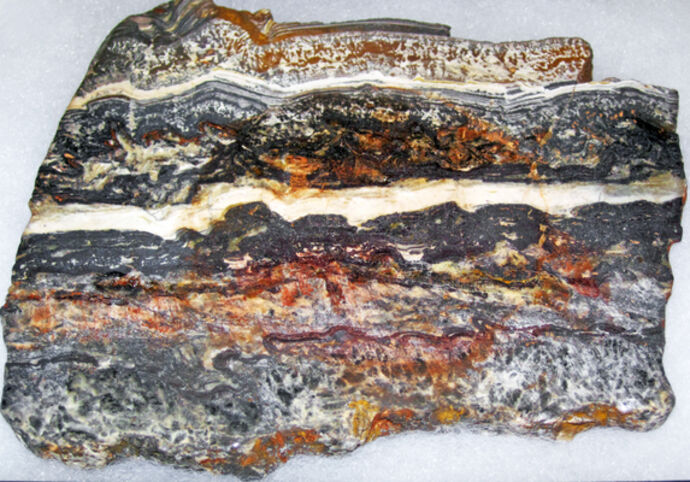The oldest fossil of a photosynthetic organism on Earth has been discovered in Australia
Paleontologists in Australia have discovered deposits of ancient oceanic sediments containing thylakoids, inclusions called photosynthetic structures in cyanobacteria cells.
>> Archaeology: Israel is a “Robbery“Warfare in the Roman Empire
>> The first invention is a “Bubble of Galaxies” From the first ages of the universe
>> The Red Sea's coral reefs are threatened by a mysterious massacre of sea urchins
>> New species of insects discovered in Corsica
>> discovery “A huge tunnel“From Gaza, calling for a ceasefire
 |
| Produced by colonies of bacteria, these fossilized stromatolites are believed to be the first traces of life on Earth in Australia's Pilbara Craton, Dresser Formation, 3.48 billion years ago. |
| Photo: Wikipedia/CVN |
The discovery indicates that photosynthesis appeared on Earth at least 1.7 to 1.8 billion years ago, according to an article in the journal. Nature.
“We discovered the oldest known thylakoids on Earth inside cylindrical microorganism found in rock sediments in Australia's McDermott Formation. Their discovery pushes back the date of the origin of thylakoid cyanobacteria to at least 1.2 billion years ago, arguing in favor of the origin of these microbes around 1.75 billion years ago.Researchers write.
The discovery was made by a team of European paleontologists led by Prof. Emmanuel Javaux from the University of Liège (Belgium) during a study of unusual microscopic fossils found on the banks of the MacArthur River in northern Australia. The rocks come from Australia's McDermott Formation, which formed on the floor of an ancient ocean about 1.78 to 1.73 billion years ago.
These sediments have cylindrical structures similar in size and shape to bacteria or archaea. Professor Zavacs and his colleagues first studied the internal structure of these microfossils using a transmission electron microscope, for which they cut several cylinders into thin slices and scanned them using this device.
Using these images, paleontologists made three-dimensional models of the fossils and discovered lamellar structures made up of parallel layers, similar to the structure of thylakoids, the photosynthetic membranes of cyanobacteria. Scientists previously found similar fossils in marine sediments in the territory of modern Europe, but their age was in the range of 500-550 million years.
That's why the discovery by Professor Javaux and his colleagues is the oldest evidence of photosynthetic organisms in general, and cyanobacteria in particular, on Earth. Further study of these fossils and the search for their analogues in other ancient rocks will help scientists clarify how and when the first organisms capable of using solar energy for nutrients appeared on our planet.
The fossil history of photosynthesis
According to current knowledge of paleontologists and geologists, the first photosynthetic organisms appeared on Earth about 2.4 to 2.1 billion years ago. Many scientists believe that the evidence “The Great Oxygen Disaster” This occurred during this time, during which the concentration of oxygen in Earth's primary oceans and atmosphere increased by several orders of magnitude in a very short period of time.
Other researchers still doubt this, because they lack incontrovertible evidence that photosynthetic organisms existed at the beginning of the Paleozoic Era. Therefore, skeptics believe that these sudden changes in gas concentrations may have led to ageogenic processes, including changes in the nature of the rock cycle on Earth.
TASS/VNA/CVN

“Certified food fanatic. Extreme internet guru. Gamer. Evil beeraholic. Zombie ninja. Problem solver. Unapologetic alcohol lover.”






More Stories
US energy production hits new record
Rugby: Former Australia captain Michael Hooper has ended his career after his dream of competing in the Olympics evaporated.
Despite its lack of discipline, Australia prevailed against Georgia